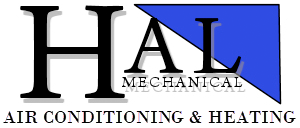When opening a restaurant or designing a commercial kitchen, either in a school or hospital cafeteria, there are many considerations and regulations to follow. When investing in a commercialized kitchen setting, it is important to make sure that the kitchen follows all standards yet be as economic as possible. Hal Mechanical often aids companies and small businesses with their kitchen setting and as such will cover some of the basic standards for commercial kitchens.
Restaurant Kitchen Equipment Power Consumption
When designing a commercial kitchen, it important to consider productive efficiency as well as all safety measures. Depending on the setting of the commercial kitchen, the staff must produce a certain amount of food during certain times; for an example, school kitchens. Lunch is only an hour long and hundreds of kids are trying to get and eat their lunch. Other commercialized kitchens may have more time to prepare the food such as restaurants that often prepare the food when ordered to ensure freshness. With efficiency in mind, the energy requirements are then determined. Commercial kitchens considered “high energy users.” Most calculations go something like this: A commercial kitchen uses around 2.5 times more energy per square footage than residential. About 40% of the energy consumption is spent on food storage and preparation. However, modern kitchens are seeking ways to improve the current energy demands of commercial kitchens.
Energy Efficient Commercial Kitchen Design Guidelines
There are many benefits when it comes to modern commercial design, starting with optimum efficiency. Newer strategies are being used which can help reduce energy cost by 10% to 30%. During the designing process, the various stations and cooking areas are put in place with their energy demand pre-calculated. When designing the kitchen the many focus points include but are not limited to:
• Mapping of Food Handling and Preparation Techniques as well as the Processes.
• Layout of Kitchen Equipment and Workstations spacing and energy usage.
• Dry Storage and Refrigeration Requirements for the size of the kitchen.
• HVAC Requirements which are much different than other HVAC systems.
• Ventilation Hood, Air Circulation, and Fire Suppression Requirement and Equipment.
• Hot Water Requirements, and source. (Hot water may be hot water heaters electrical or gas or tankless hot water systems.)
Easy to Clean Commercial Stainless Steel Sheet Metal
One of the major steps when designing a commercial kitchen isn’t just the layout and energy estimate but current laws and regulations. Each state and city laws and regulations differ. It is important to follow proper laws and regulations for safety and sanitary protocols. One consideration is that the material used in the kitchen must be able to be cleaned and sanitized such as stainless steel workspaces and equipment. Equipment that makes contact with the walls and floors must be sealed to prevent contamination. The only exceptions are equipment that is on wheels and is movable. Other safety systems must also be put in place, such as fire deterrents, sprinklers and proper extinguishers.
Commercial Central Air Conditioning, Ventilation, Sheet Metal Fabrication & More in Aliante, Centennial, Desert Shores, Eldorado, Enterprise, Green Valley Ranch, Henderson, Lone Mountain Village, North LV, Peccole Ranch, Paradise, Silverado Ranch, Spring Valley, Summerlin, Sunrise Manor, Tuscany Village, Whitney, Winchester & Las Vegas Nevada
Designing a commercialized kitchen often requires professional assistance and ongoing management. When opening a restaurant, or other commercialized kitchen, contact Hal Mechanical. We provide many services that can aid in the designing and ongoing care of a commercial kitchen. For quality HVAC services and more, contact Hal Mechanical today.






